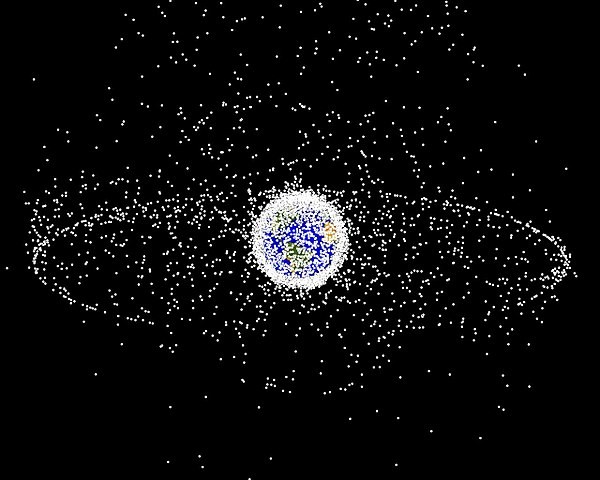According to an American mechanical engineering professor, our planet is about to have its own rings. The Earth could therefore look like Saturn, but with one difference:the rings will be made of scrap metal, and not of rocks and blocks of ice. The expert also offered a solution to control space waste.
Our planet could also have rings. This prediction is that of Jake Abbott, professor of mechanical engineering at the University of Utah (USA). Asked in an article in the local daily Salt Lake Tribune on November 13, 2021, he indicates that these future rings will be made of space junk , and therefore scrap. Remember in passing that the rings of the planet Saturn are composed of water ice and dust.
Space junk orbiting Earth is a concern for businesses and governments. In addition to the risk of collision with satellites, the risks also relate to space exploration. According to the European Space Agency (ESA), 5,000 rockets put about 8,000 satellites into orbit. since Sputnik in 1957. Among the waste in question, 170 million measure more than one millimeter and 670,000, less than three centimeters. Add to that 29,000 debris over 10 cm currently under surveillance.

The problem is of great concern, especially since private companies are currently launching or planning to launch their own satellites (or constellations), SpaceX in the lead. As part of its Starlink project, Elon Musk's company has already placed around 2,800 satellites in orbit . While the project planned for 12,000 in the long term, the decision to add 30,000 more was recently taken. In addition, SpaceX could one day undertake to deploy a similar system around the planet Mars.
The risks of collision above the Earth are therefore increasingly important. A few weeks ago, the International Space Station (ISS) avoided space debris from the test of a Chinese missile carried out in 2007. In parallel, various clean-up projects from Earth orbit are in development such as the RemoveDebris satellite and the ELSA-d spacecraft, two devices designed by ESA.
Jake Abbott also mentioned a possible solution in a publication in the journal Nature on October 20, 2021. According to him, the ideal would be to develop a robotic arm with a rotating magnet . This could then generate "whirlpools", a kind of electric current to control space junk by reducing its speed, among other things.